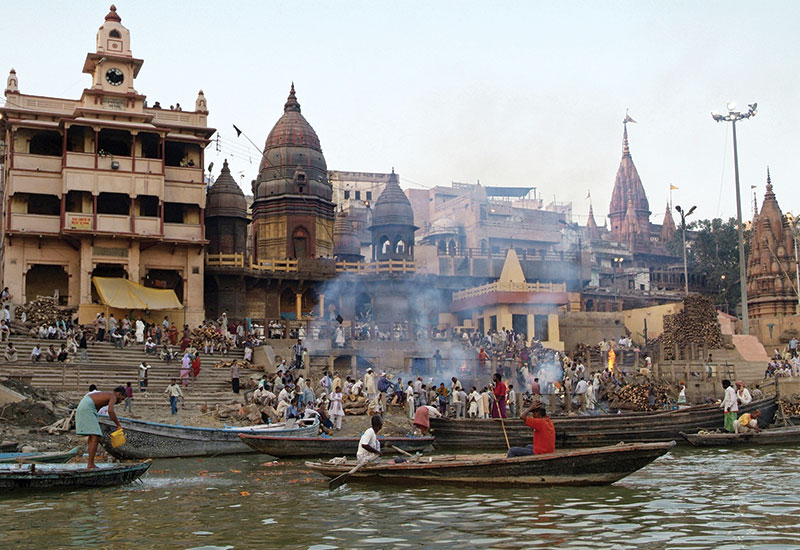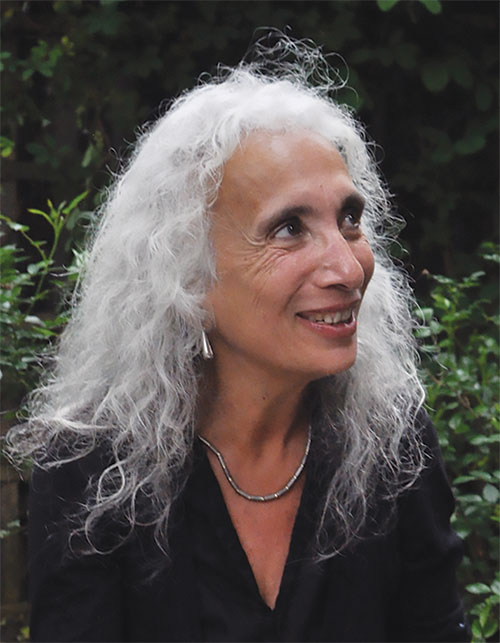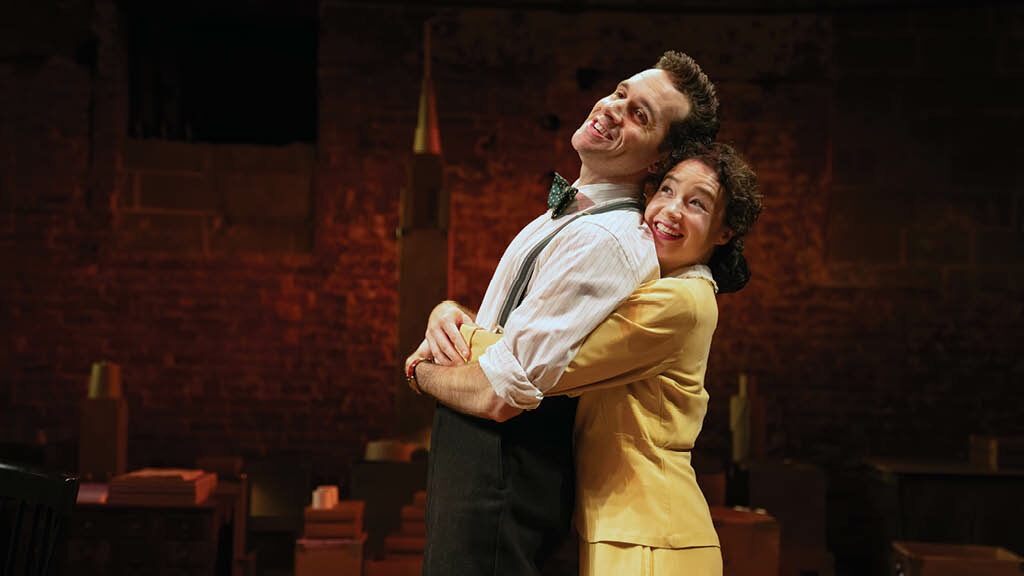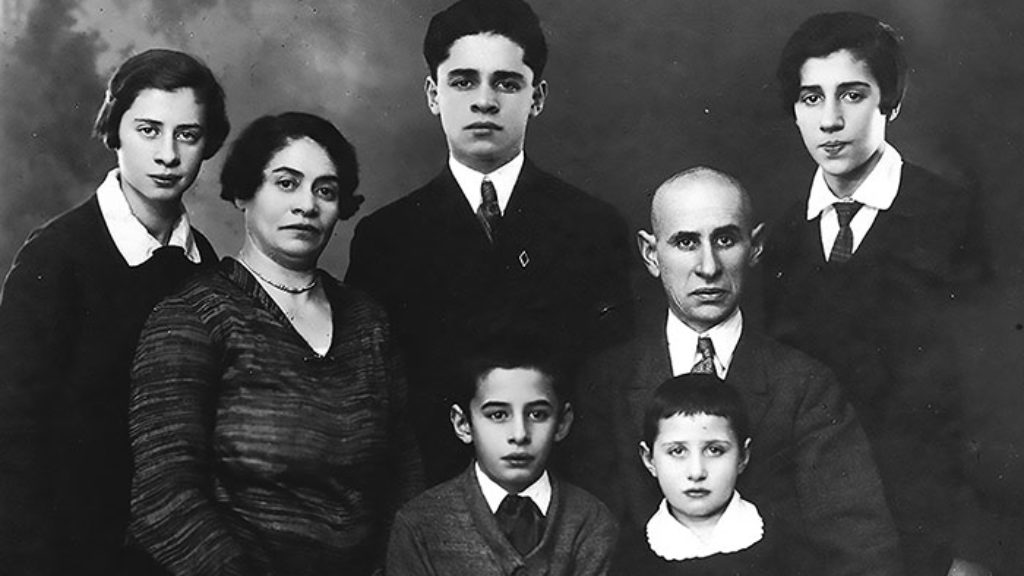Mastering the Return
How does a Jewish mother—a grandmother, a bubbe, and a balabusta from Brooklyn—come to spend her last days warming herself by a crematory fire along the banks of the Ganges? We are prepared for the mother who cries for or rages at her child veering onto a different religious path, but in her ambitious and raucous new novel, Tova Reich flips the script.
Mother India opens with “an ultra–Orthodox Jewish woman closing in on the finish line of her eighth decade of life” who decides that instead of taking the chance on being born again through gilgul neshamot, she will heed the words of the Hindu mystics who promise that “[w]hoever dies in Varanasi will achieve liberation, even a cockroach.” As her daughter tells the story:
It was not an accident that Ma’s hand had fallen upon that magazine and that it had opened itself up like an exhaled breath to that page. It was her karma, she told me with the wicked grin of an initiate. The holy man was speaking directly to her; he was sending her a message, special delivery. It was then and there, as she spun it to me afterward, in that chemo parlor with its décor the color of viscera that she was swept up by her inspiration. She would stop all her treatments and go to Varanasi to die.
Ma is just too tired to risk doing it all again.
But even as she flees reincarnation, she is met in India by a Chabad family praying for the return of the Rebbe, who “[h]imself had sent them to this heathen place to reach out to such wandering Jews, even to such endangered species as my mother.”
The Jewish woman Reich has conjured up to open her novel is subsumed in her role as “the wife of a rabbi, a rebbetzin, mother of nine, grandmother to many. How many? Don’t ask.” Like Lot’s wife, she lacks even a name: She is only “Ma.” As off the derech as Reich’s narrator is—an “old India hand, a Hin-Jew, a Jewbude”—she is nonetheless mystified by her mother’s rebellion, for surely no rabbi would ever, cancer diagnosis or no, give her a dispensation to find solace and hoped-for release from the cycle of reincarnation in a temple of idol worship. Reich turns the trope of the parent bewildered by their child’s drive to escape the parental orbit—door closed, music blaring—on its head, leaving her narrator to search for clues for the derech, the path, that her mother is on.

But Ma is not the only mother in Mother India: There is Meena (born Mina) herself, mother to the teenaged Maya, and Geeta. Same-sex marriage isn’t recognized in India, so Meena and her high-caste, big-money Indian partner had a Jewish wedding in New York with “all the broken plates and glasses . . . the dancing chairs, the complete smorgasbord including the ice sculpture in the shape of a swan, every last crumb of daughterly entitlement.” “So you want a Jewish wedding?” Ma had asked.
Nu, so okay. But just in case you don’t happen to know this, the custom is, the bride’s family pays for everything except FLOPS—flowers, liquor, photography, and sheitel (that’s the matron’s wig). So since it’s a question of money, what I need to know right now is—are we the parents of the bride or the groom?
Reich rounds out her cast of characters with real-life mothers plucked from recent history. Amma, the guru whose ashram Meena takes her daughter Maya to at a moment of parental indecision, is Mata Amritanandamayi, a contemporary Indian holy woman whose charitable endeavors raise some $20 million a year and who does, as pictured in the book, spend hours each day hugging supplicants. Reich also has the real-life Chabad rebbetzin Rivka Holtzberg confide in Meena that her baby Moshe is actually her third child, the first two having died of Tay-Sachs (as was, in fact, the case). And Reich includes Sandra Samuels, the nanny who saved Moshe’s life when his parents were killed in the 2008 Mumbai terrorist attacks.
Mother India is divided into three parts: a short novella each for Ma, Meena, and Maya. Speaking in the past tense, Meena takes us from her mother’s sunny apartment in the Mumbai Chabad House building and the smoke-filled ghats by the river to the home she shares with her daughter, and from there into the streets of Mumbai, searching for Maya when the girl stages her own disastrous rebellion. Nothing in the section on Meena’s mother and her death nor the second part, which takes the reader into the muck-filled streets of the slums, police stations, and worse, quite prepares the reader for the devastating final third of the book.
With the demise of the only unambiguously sympathetic character in the book, Ma, the stage is set for the arrival of Meena’s twin brother, Shmelke. He is on the lam from Israeli authorities after a sex-abuse scandal and arrives in Kolkata, India, after stops in Machu Picchu; Postville, Iowa; Davos, Switzerland; and Western Sahara. Shmelke turns the building that had formerly held one of Mother Theresa’s hospices into Rabbi Tabor’s House of Holy Healing ashram, a seemingly sacred endeavor to save wayward girls. It is in this final third that Mother India descends fully into darkness, largely driven by Reb Shmelke’s great capacity for both apparent good and actual evil.
Reich’s narrative choices are audacious, and one cannot but admire the craftsmanship, indeed genius, with which Reich shows us how dangerous a true believer can be. She understands that, at root, we are a world of seekers. Like the Israelis she depicts trekking to ashrams, like Lamar Odom at the Rebbe’s kever, we long for holiness even if we only have the strength or understanding to touch the hem of its garment. But she makes it clear just how much blind faith can cost. Her novel sometimes reads as farce, but it is ultimately a searing, serious book.

Mother India is a triad of stories, but it is built on the pairing of opposites: male and female, fiction and reality, chaos and comfort, the Hindu pantheon and Judaism’s strict monotheism. But Reich surprises us by fixing our attention on the similarities between her pairings, not the differences, sometimes with a light touch: “Ma believed in jewelry, especially gold, you could never have too much; in this as in so many other ways, I might point out, Indians and Jews are more alike than you would ever have dreamed of in your philosophy.” Elsewhere, she is more theologically daring. Embedding biblical allusions in her descriptions of pagan practices, Reich seems to suggest that the world is so entangled that there is no space between the sacred and profane:
“If you love me,” Ma spoke, “put your hand under my thigh and do me a favor. Do not bury me in America or Israel, or in the ground anywhere. But when I am dead, carry my body along the ghats, from Assi to Manikarnika. Cremate me there and throw my ashes into the river.”
In the river of humanity that flows through Mother India, the only Jews who emerge as full-fledged characters are Hasidim and Israelis: The action returns again and again to Mumbai’s Chabad House. In addition to Meena’s brother the renegade Bratslaver Hasid, there is her ex-husband, “Shmiel the schlemiel Shapiro,” a nebbish who makes his living playing guitar at the tomb of Shlomo Carlebach. “Strumming out of tune the only three chords in a minor key that he managed to halfway master . . . his cardboard guitar case open at his feet filling up with coins and bills deposited by the stream of pilgrims and lost souls and borderline cases.” And here is her sketch of Israelis who have found their way to Chabad and have now found themselves in an interreligious confrontation: “The rabbi’s boys were indeed all Israelis, hardened veterans of the Israeli Defense Forces morphed into stoned and sexed-out seekers in India, seized by the influence and inspiration of Rabbi Assi himself, newly minted penitents, returnees to the faith.” Reich has a way of summing up Jewish characters that sparks instant recognition for those in the know.
Reich has somehow managed to pack not just Hindus and Jews into this relatively slim volume but also Muslims, Buddhists, and even a stray Christian. She crowds her religions in tight like the people in the slums Meena visits, searching for her daughter. One of the ways Reich pulls this off is by dispensing with explanations for unfamiliar terms and concepts. The reader must choose whether to trust the surrounding text to provide sufficient context or to google definitions. I opted for the latter. The alternative is to wonder who or what Shiv Sena and Bal Thackery are and whether paan and dupatta are singular or plural (and if they can be bought on Amazon).
Born in New York and currently a resident of Washington, DC, Reich has lived in both an ultra-Orthodox neighborhood in Jerusalem and in India, among the ghats of Varanasi. A longtime columnist for the New York Times, she wrote movingly of her mother’s death in a 1988 essay: “I thought: She’s gone; it’s all over for me; the year’s lost; I’ll never recover; I’ll never be able to work again.” It is a loss she continues to explore in her work, along with her relationship to Judaism and Jewishness. (She is deeply embedded in the Jewish world; her brother is the well-known activist Riverdale rabbi and leader of Open Orthodoxy Avi Weiss; her husband, Walter Reich, is the former director of the US Holocaust Memorial Museum.)
Readers of Reich will detect the reverberations of her previous books in Mother India. She has reworked her character Shmuel Himmelhoch from Master of the Return, giving him the diminutive Shmelke and again making him a Bratslaver hippie. Mata Amritanandamayi is not her first charismatic female character with spiritual powers. Again, too, Reich pushes boundaries on her imagining of second-generation and third-generation Holocaust survivors.
From Ma’s death on, Reich removes characters and then pulls plot out of the void that limns their departure. As each spark of human life seeps out, her fictional world becomes more chaotic. In the end, the all-giving, all-caring Ma has been erased, and only monstrous mothers (and mother substitutes) remain. Again and again, Reich brings us back to the uncomfortable fact that holiness can, and often does, coexist with horror. In the hands of a lesser author, her uncomfortable subject matter would be unbearable.
Everything in the fictional world Tova Reich has created exists in duplicate or triplicate. Far from being monotonous, these continual thematic returns at first give the reader a thrilling frisson of recognition. As the narrative descends into darkness, the pace of repetition increases until one feels as if one is drowning in a sea of characters or the murky waters of the Ganges. The effect is, fittingly, claustrophobic, overwhelming. Allusions double back on themselves to be memories of memories of memories; two strands twisted together become a knot. Nothing is wasted; nothing ever truly goes away. Everything wraps around itself, like a sari or a burial shroud.
Suggested Reading
Awe and Joy
S. Y. Agnon curated a stunning anthology of Jewish texts, published later in English as Days of Awe. In his introduction to the anthology, the eminent scholar Judah Goldin grappled with the idea of awe—and so does this author.

Reprise of the Repressed
So much of American Jewish pop-culture sets out to shame the audience, one wonders why there's such an appetite for it.

A Stolen Seat
“Good Shabbos—you’re sitting in my seat” takes on a whole new meaning when it’s your brother- in-law talking. From a Russian Jewish diary, with an introduction by Alice Nakhimovsky and Michael Beizer.
Coming with a Lampoon
Jacobson is a world master of the art of disturbing comedy and each new work of his advances the genre—his latest one by a giant step.
Comments
You must log in to comment Log In